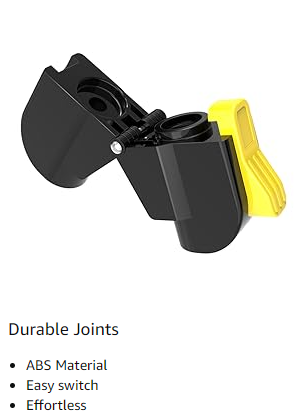
-
 Afrikaans
Afrikaans -
 Albanian
Albanian -
 Amharic
Amharic -
 Arabic
Arabic -
 Armenian
Armenian -
 Azerbaijani
Azerbaijani -
 Basque
Basque -
 Belarusian
Belarusian -
 Bengali
Bengali -
 Bosnian
Bosnian -
 Bulgarian
Bulgarian -
 Catalan
Catalan -
 Cebuano
Cebuano -
 Corsican
Corsican -
 Croatian
Croatian -
 Czech
Czech -
 Danish
Danish -
 Dutch
Dutch -
 English
English -
 Esperanto
Esperanto -
 Estonian
Estonian -
 Finnish
Finnish -
 French
French -
 Frisian
Frisian -
 Galician
Galician -
 Georgian
Georgian -
 German
German -
 Greek
Greek -
 Gujarati
Gujarati -
 Haitian Creole
Haitian Creole -
 hausa
hausa -
 hawaiian
hawaiian -
 Hebrew
Hebrew -
 Hindi
Hindi -
 Miao
Miao -
 Hungarian
Hungarian -
 Icelandic
Icelandic -
 igbo
igbo -
 Indonesian
Indonesian -
 irish
irish -
 Italian
Italian -
 Japanese
Japanese -
 Javanese
Javanese -
 Kannada
Kannada -
 kazakh
kazakh -
 Khmer
Khmer -
 Rwandese
Rwandese -
 Korean
Korean -
 Kurdish
Kurdish -
 Kyrgyz
Kyrgyz -
 Lao
Lao -
 Latin
Latin -
 Latvian
Latvian -
 Lithuanian
Lithuanian -
 Luxembourgish
Luxembourgish -
 Macedonian
Macedonian -
 Malgashi
Malgashi -
 Malay
Malay -
 Malayalam
Malayalam -
 Maltese
Maltese -
 Maori
Maori -
 Marathi
Marathi -
 Mongolian
Mongolian -
 Myanmar
Myanmar -
 Nepali
Nepali -
 Norwegian
Norwegian -
 Norwegian
Norwegian -
 Occitan
Occitan -
 Pashto
Pashto -
 Persian
Persian -
 Polish
Polish -
 Portuguese
Portuguese -
 Punjabi
Punjabi -
 Romanian
Romanian -
 Russian
Russian -
 Samoan
Samoan -
 Scottish Gaelic
Scottish Gaelic -
 Serbian
Serbian -
 Sesotho
Sesotho -
 Shona
Shona -
 Sindhi
Sindhi -
 Sinhala
Sinhala -
 Slovak
Slovak -
 Slovenian
Slovenian -
 Somali
Somali -
 Spanish
Spanish -
 Sundanese
Sundanese -
 Swahili
Swahili -
 Swedish
Swedish -
 Tagalog
Tagalog -
 Tajik
Tajik -
 Tamil
Tamil -
 Tatar
Tatar -
 Telugu
Telugu -
 Thai
Thai -
 Turkish
Turkish -
 Turkmen
Turkmen -
 Ukrainian
Ukrainian -
 Urdu
Urdu -
 Uighur
Uighur -
 Uzbek
Uzbek -
 Vietnamese
Vietnamese -
 Welsh
Welsh -
 Bantu
Bantu -
 Yiddish
Yiddish -
 Yoruba
Yoruba -
 Zulu
Zulu


Oct . 07, 2024 10:41 Back to list
manual hydraulic hose crimping tool
Manual Hydraulic Hose Crimping Tools An Essential Equipment for Hydraulic Systems
In the world of hydraulic systems, ensuring the integrity and reliability of hoses is paramount. Central to this quality assurance is the use of manual hydraulic hose crimping tools, indispensable for anyone working with hydraulic equipment. These tools cater not only to professional mechanics and technicians but also to DIY enthusiasts who wish to perform hose repairs or assembly efficiently.
A manual hydraulic hose crimping tool operates through a straightforward yet effective mechanism. The tool uses hydraulic pressure to crimp fittings onto hoses, creating a secure and leak-free connection. This process is crucial because the hoses are often subjected to high pressure in equipment such as tractors, construction machinery, and industrial machines. Failure of a hose can lead to catastrophic leaks, equipment downtime, and even safety hazards. Thus, proper crimping is not just important—it is vital.
One of the primary advantages of manual hydraulic hose crimping tools is their portability and ease of use. Unlike their electric counterparts, manual tools do not require a power source. This feature makes them ideal for on-site repairs, as they can be used in remote locations without the need for an electrical outlet. Additionally, these tools often come with various dies that allow for different hose sizes and types, making them versatile for numerous applications.
manual hydraulic hose crimping tool

The design of a manual hydraulic hose crimping tool typically consists of a frame, hydraulic cylinder, and a set of interchangeable dies. The operator places the hose and fitting into the designated die, then activates the hydraulic cylinder by manually pumping the handle. This action compresses the fitting onto the hose, creating a tight seal. Depending on the size and type of hose being crimped, the process can take only a few seconds, allowing for rapid assembly and repairs.
Maintenance of these tools is also straightforward. Regular cleaning and occasional lubrication of moving parts ensure optimal performance and longevity. Furthermore, users should inspect dies for wear and tear, replacing them as necessary to maintain consistent crimp quality. By adhering to these maintenance practices, one can extend the life of the tool and avoid costly mistakes.
While manual hydraulic hose crimping tools are highly effective, users should be aware of certain best practices to achieve the best results. It is essential to select the correct die based on the hose size and type, as using the wrong die can compromise the crimp. Additionally, proper alignment of the hose and fitting during crimping is crucial to ensure an even compression, preventing unwanted leaks.
In conclusion, manual hydraulic hose crimping tools are a fundamental component of any hydraulic system maintenance toolkit. Their simplicity, portability, and effectiveness make them a favorite among professionals and hobbyists alike. With proper use and maintenance, these tools can significantly enhance the reliability of hydraulic hoses, leading to safer and more efficient operations in various industries. By investing in a quality manual hydraulic hose crimping tool, one can ensure the longevity and performance of hydraulic systems, ultimately contributing to the smooth operation of machinery and equipment.
Latest news
What Are Construction Tools and How Are They Used?
NewsJul.11,2025
Professional-Grade Duct Rodding Tools for Superior Cable Installation
NewsJul.11,2025
Enhancing Safety and Efficiency with Modern Hot Stick Solutions
NewsJul.11,2025
Empowering Cable Installation with Advanced Rodder Solutions
NewsJul.11,2025
Elevate Your Cable Installation Projects with Cable Pulling Tools
NewsJul.11,2025
Efficient Cable Handling Solutions: Cable Rollers for Sale
NewsJul.11,2025











